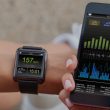There’s a lot more to mobile broadband data than video
When the subject of mobile broadband data comes up in conversation, invariably the chatter quickly turns to so-called killer apps such as video and the ability to send extremely large files — for instance, building floor plans — to first responders while they are en route to an incident. But other applications are emerging that promise to not only keep first responders safer but ensure that perpetrators get what they have coming — and that municipal coffers get every dollar in fines that they deserve.
For example, Motorola, which has been at the leading edge of mobile broadband data technology development, demonstrated at last month’s International Wireless Engineering Exposition in Las Vegas an e-citation capability for its MC35 and MC55 personal digital assistants (PDAs). Officer safety is an important benefit of the application, said the Anatoly Delm, a Motorola product marketing manager, who used a traffic stop as an example.
“The officer has to approach the car, get the driver’s license and then — without knowing anything about the driver — turn his back to that person and walk back to the cruiser to call in the license to find out if there are any wants or warrants.”
With the e-citation application, the officer can scan the license into the system while at the driver’s car and punch in the alleged violation. At a touch of a button, the application lets the officer print out a hard copy of the ticket for the driver and then upload the data to the headquarters network. According to Delm, eliminating the need for officers to write tickets also eliminates the legibility problems that often cause citations to be tossed out by courts. He cited one Miami-Dade County judge who said 40% of tickets get thrown out of his court due to illegibility. That’s a lot of potential fine revenue to lose over poor penmanship.
“Let’s say this application drops the number of tickets rejected by 10% of the overall volume — which is small, based on what we’ve seen — this system will pay for itself in less than a year,” Delm said. “It’s not getting new people ticketed; it’s just making sure that the ones who are caught pay for their transgressions.”
Motorola also demonstrated a fingerprint reader that snaps onto its MC70 and MC75 PDAs, which will make it easier for officers at an incident to determine who is a perpetrator — and who isn’t — according to Delm.
“Let’s say two officers who are cruising a gang-infested area catch 10 people loitering. Nine they should let go, but one is wanted for something,” he said. “In the past, they’d have to call out a few other units, take everybody back to the station and figure it all out there. Now, in a minute or so, you can find out at the scene who the person is that needs to be brought in.”
Another device Motorola pitched is a RFID-based barcode reader that is designed for tracking first responders and victims during and after major incidents such as hurricanes, tornadoes and wildfires. According to Delm, some jurisdictions issue badges to first responders at such incidents to ensure that everyone on the scene is legitimate. Not only that, some jurisdictions pre-register first responders. A quick scan of the barcode on their badge would identify those who have special skills, such as those who have been trained in advanced cardiopulmonary resuscitation or in fighting hazardous materials fires.
Also, some jurisdictions issue hospital-style wristbands to victims in evacuation scenarios. With this application, victims can be scanned when they get onto an evacuation bus, and when they arrive at a shelter or hospital. Such information not only helps officials more quickly share vital information with family members, but also helps them make staging decisions, because they would know exactly how many victims have been transported and to where.
Such a capability would be handy when victims temporarily are let back into their residences to gather some of their possessions, because first responders would know to try to find them if they haven’t re-emerged in a predetermined amount of time, Delm said.
In addition to these mobile broadband data applications, Motorola demonstrated a portable camera that can be attached to a person’s head or other part of the body and is designed for use in hostage situations by bicycle patrols or any application that requires the user to keep his hands free. An integrated mesh radio enables transmission of the video to any other user who is on the mesh network, said Doug Bartman, a Motorola product marketing manager.
















